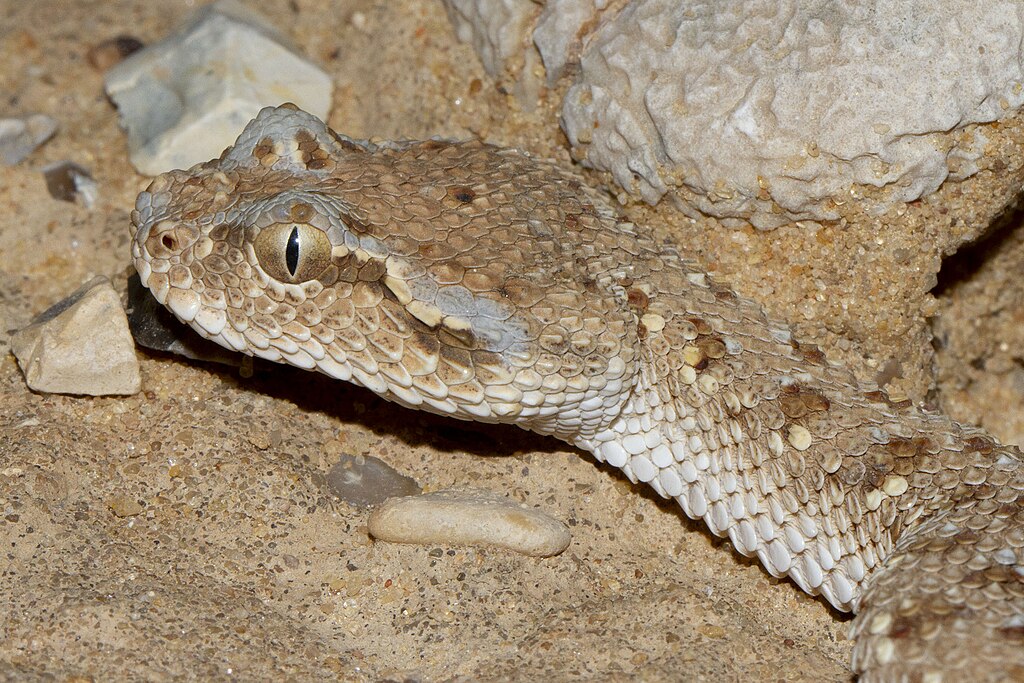In the shadowy depths of the Middle Eastern deserts, a remarkable evolutionary adaptation has emerged that challenges our understanding of animal mimicry. The Spider-tailed Horned Viper (Pseudocerastes urarachnoides) possesses one of the most sophisticated forms of caudal luring in the animal kingdom—a specialized tail structure that astonishingly resembles a moving spider or scorpion. This extraordinary snake doesn’t merely look like another creature; it has evolved to move its tail in precise patterns that mimic the movements of arachnids, creating one of nature’s most convincing and deadly illusions. Through this remarkable adaptation, this viper has developed a hunting strategy that blurs the line between predator and prey, challenging our understanding of evolutionary adaptations in reptiles.
Discovery and Scientific Recognition
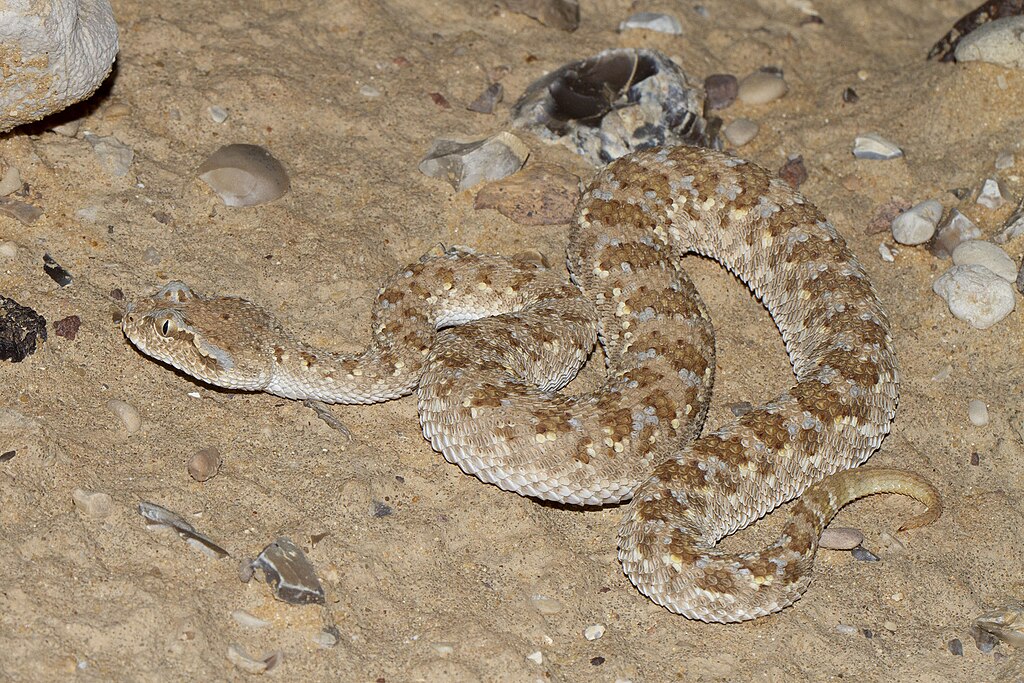
The Spider-tailed Horned Viper remained hidden from scientific knowledge until relatively recently, with its formal scientific description occurring only in 2006. Iranian researchers first documented this remarkable snake in the western provinces of Iran, though local people had known about it for generations. The scientific community initially treated the discovery with skepticism, as the tail adaptation seemed almost too extraordinary to be real. This delay in recognition highlights how even in our modern era, remarkable new species with extraordinary adaptations can remain undiscovered or unclassified. The formal naming of the species as Pseudocerastes urarachnoides reflects its unique characteristics—”urarachnoides” literally translating to “tail like a spider.”
Anatomical Specialization
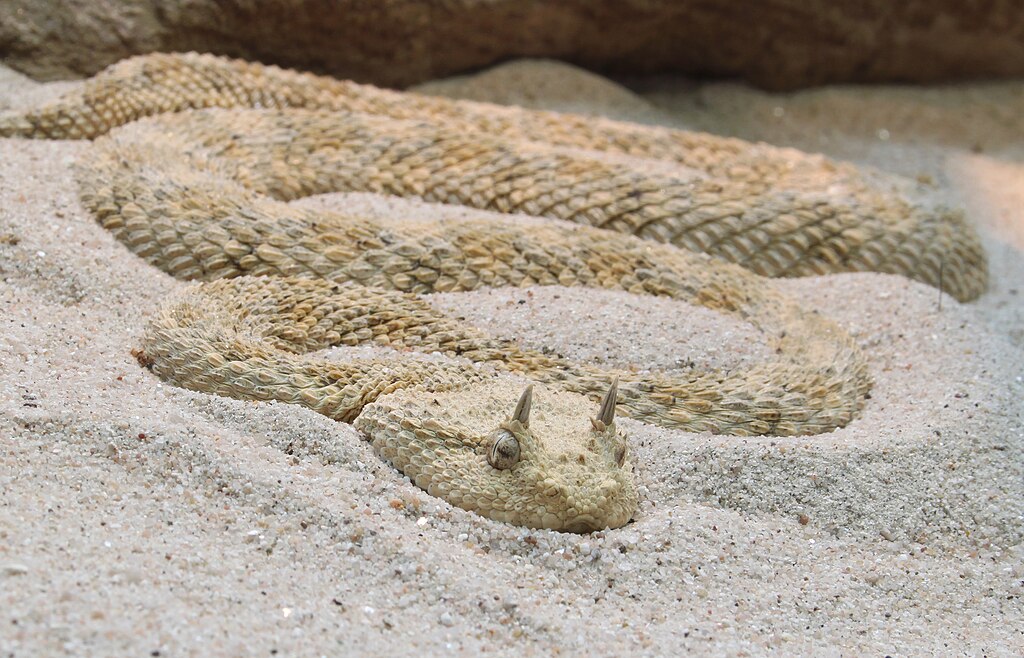
The most striking feature of this viper is its highly modified tail, which bears little resemblance to typical snake tails. The terminal portion contains an elaborate structure with enlarged, flattened scales arranged in a bulbous formation that closely resembles the body of a spider or small scorpion. Fine thread-like scales extend from this bulbous portion, creating the illusion of spider legs or scorpion pincers. This anatomical specialization is not merely superficial—the underlying musculature has evolved to allow precise, independent movement of this tail structure. The remainder of the snake’s body is adapted for desert camouflage, featuring a sandy-colored base with darker geometric patterns that blend perfectly with rocky terrain, allowing the body to remain virtually invisible while only the “spider” moves.
Behavioral Mimicry
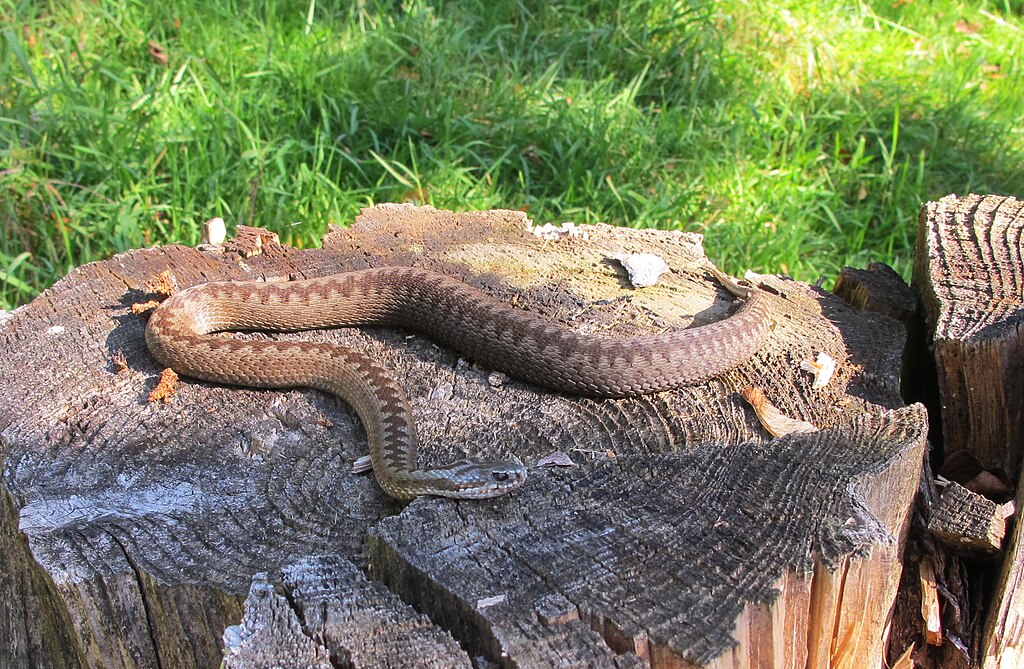
What truly sets this viper apart is not just the physical resemblance of its tail to an arachnid, but the sophisticated behavioral mimicry it employs. The snake can wiggle its tail in patterns that precisely imitate the skittering, jerky movements of spiders or the threatening posture of scorpions. When hunting, the viper buries most of its body in sand or hides among rocks, leaving only its “spider tail” exposed and moving. The tail movements are not random but carefully choreographed to mimic specific arachnid behaviors—including the apparent struggling movements of a trapped insect. The snake can maintain this deceptive display for extended periods, patiently waiting as its lure attracts curious birds that mistake the tail for an easy meal.
Evolutionary Development
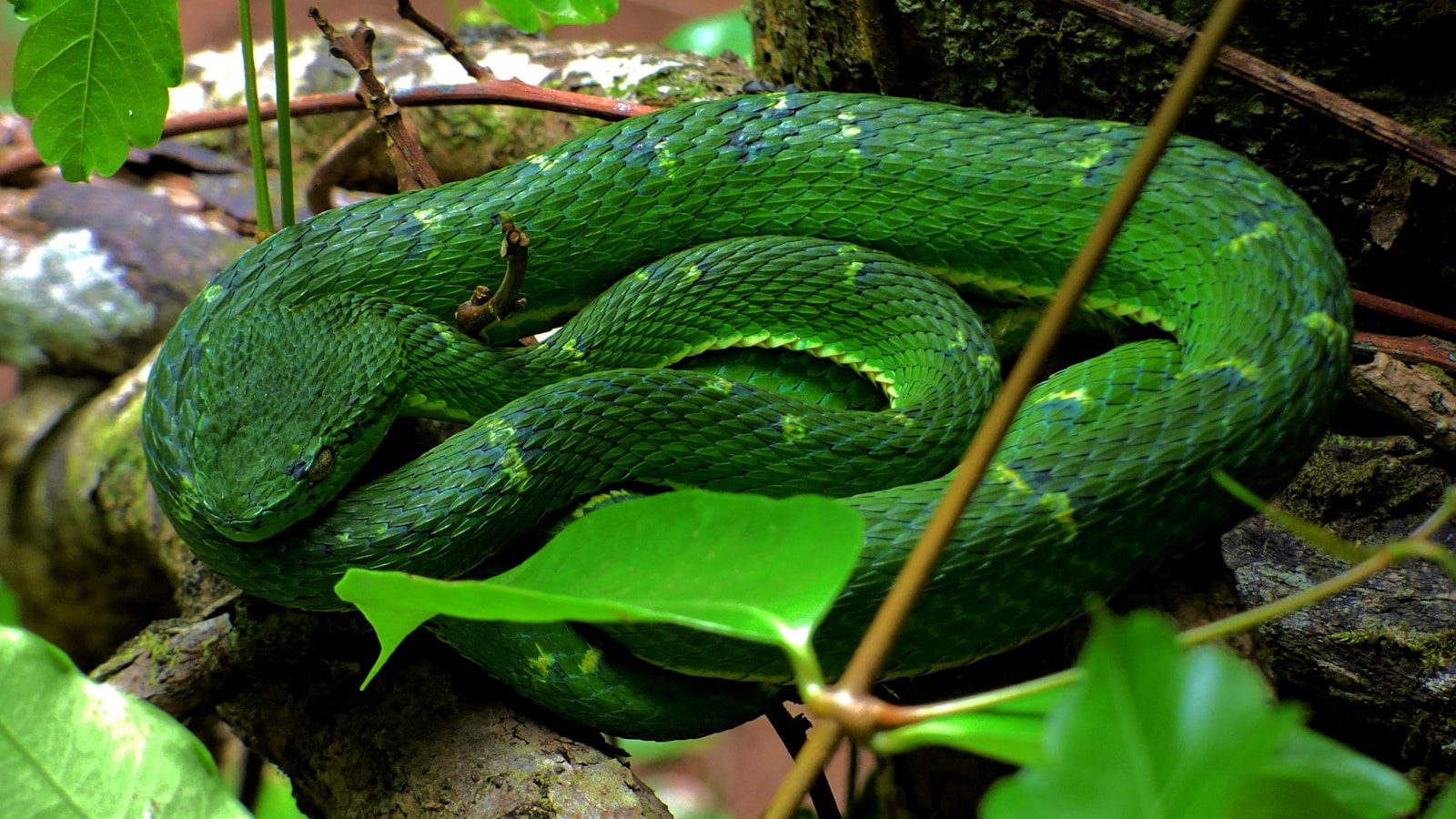
The evolution of such a specialized adaptation represents one of the most remarkable examples of convergent evolution and specialized predation strategies. Scientists believe this elaborate tail structure developed over millions of years through a process of incremental adaptations. Initially, minor tail movements may have occasionally attracted prey, providing a slight hunting advantage. Over countless generations, individuals with more effective tail structures and movement capabilities would have been more successful hunters, passing these traits to offspring. This classic example of natural selection demonstrates how predation pressure can drive the development of extraordinarily specific adaptations. The fact that this adaptation appears in only one known species suggests it evolved in response to very particular environmental and ecological conditions.
Hunting Strategy
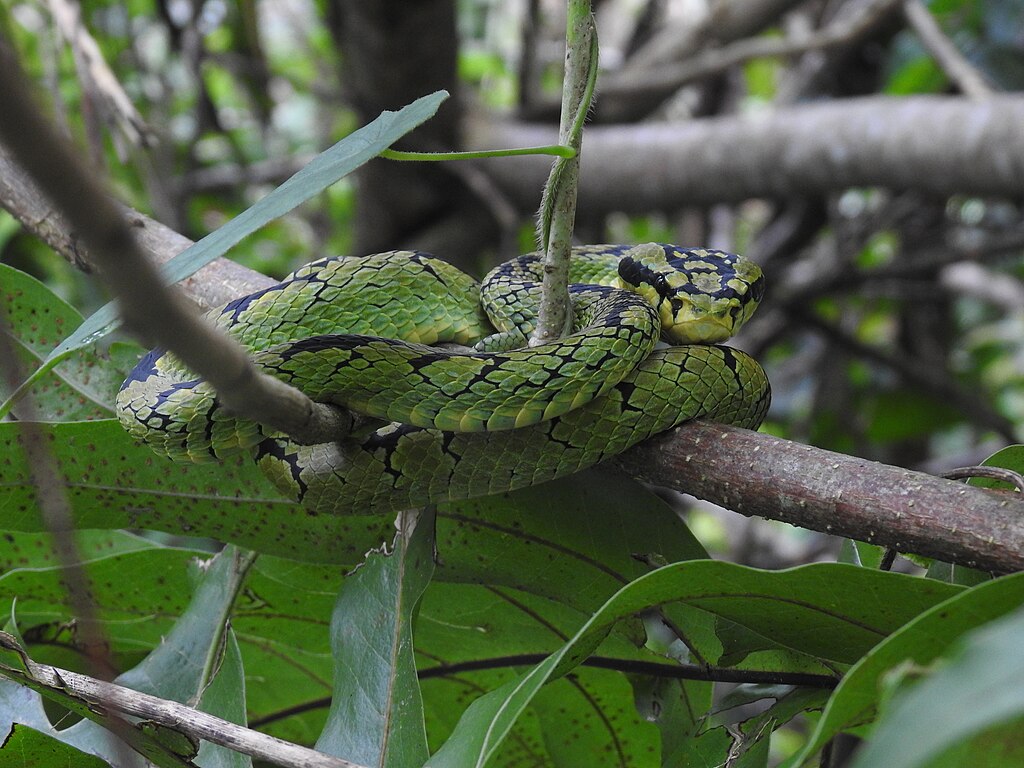
The hunting strategy of the Spider-tailed Horned Viper represents one of the most sophisticated examples of ambush predation in the reptile world. The snake positions itself with its body completely concealed, often partially buried in sand with only its camouflaged head and mimetic tail visible. It then begins the mesmerizing movement of its tail, creating a convincing illusion of a spider or scorpion moving about. This performance specifically targets insectivorous birds that would naturally prey on such arachnids. When a bird swoops down to capture what it perceives as an easy meal, the viper strikes with lightning speed, injecting potent venom. This strategy is particularly effective because it exploits the natural predatory instincts of birds, essentially turning predator into prey through deception.
Target Prey Species
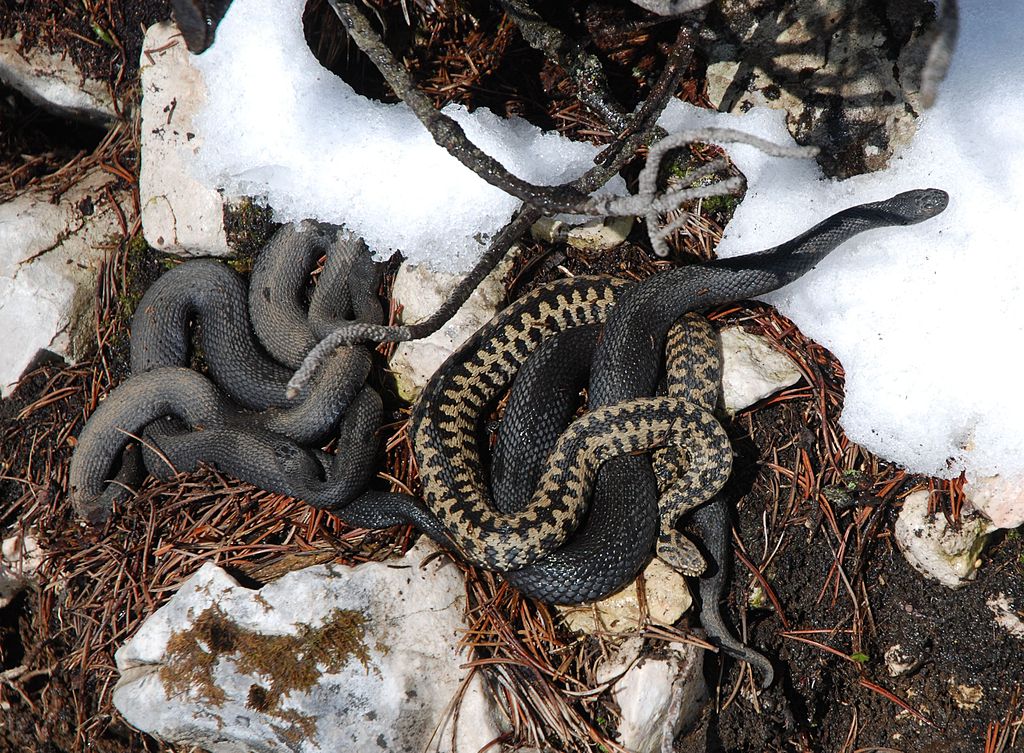
The Spider-tailed Horned Viper has evolved its mimicry specifically to attract birds that naturally feed on arachnids. Research has shown that various species of desert-dwelling birds, including wheatears, desert larks, and certain warblers, are particularly susceptible to this deception. These birds have evolved keen visual systems that help them detect the movement of small arthropods even from considerable distances. The viper’s tail movements trigger an almost automatic predatory response in these birds, overriding potential caution. Video documentation of successful hunting events shows birds appearing almost hypnotized by the movement of the snake’s tail, focusing entirely on the perceived spider while remaining oblivious to the deadly predator controlling it.
Geographic Distribution

The Spider-tailed Horned Viper inhabits a remarkably limited geographic range, found primarily in the Zagros Mountains of western Iran, with some potential populations in adjacent areas of Iraq. This restricted distribution has contributed to the species remaining scientifically undescribed for so long. The snake thrives in arid and semi-arid rocky habitats at elevations between 1,000 and 1,500 meters above sea level. These mountainous desert regions provide the perfect ecological setting for its specialized hunting strategy—with abundant rocky outcroppings for concealment, a healthy population of insectivorous birds, and enough arthropods to make the mimicry ecologically plausible. Recent surveys suggest the species may occupy a slightly larger range than initially thought, but it remains one of the most geographically restricted vipers in the Middle East.
Comparison to Other Caudal Luring

While several snake species employ some form of caudal luring (using tail movements to attract prey), the Spider-tailed Horned Viper represents the most extreme and specialized example of this behavior. Many juvenile vipers and some adult species like the Death Adder use simple tail wiggling that may resemble a worm or insect larva to attract lizards or frogs. The North American Copperhead snake exhibits a yellow-tipped tail that it wiggles to mimic a grub or caterpillar. However, these examples involve relatively simple movements and minimal anatomical specialization. The Spider-tailed Horned Viper stands apart with its elaborate anatomical modification combined with complex, targeted behavioral mimicry specifically evolved to fool birds—a much more visually oriented and generally cautious type of prey than the amphibians or reptiles targeted by other caudal luring species.
Venom Characteristics

Like other members of the Viperidae family, the Spider-tailed Horned Viper possesses a sophisticated venom delivery system optimized for its hunting strategy. Its venom contains a complex mixture of proteins and enzymes primarily designed to rapidly immobilize avian prey. The venom includes hemotoxic components that damage blood vessels and tissue, neurotoxic elements that can affect the nervous system, and cytotoxic factors that destroy cells. This potent combination ensures that even if a bird manages to escape the initial strike, it will quickly become incapacitated and unable to fly far. While primarily evolved for hunting birds, the venom is potentially dangerous to humans, though due to the snake’s remote habitat and rarity, human envenomations are extremely uncommon.
Conservation Status
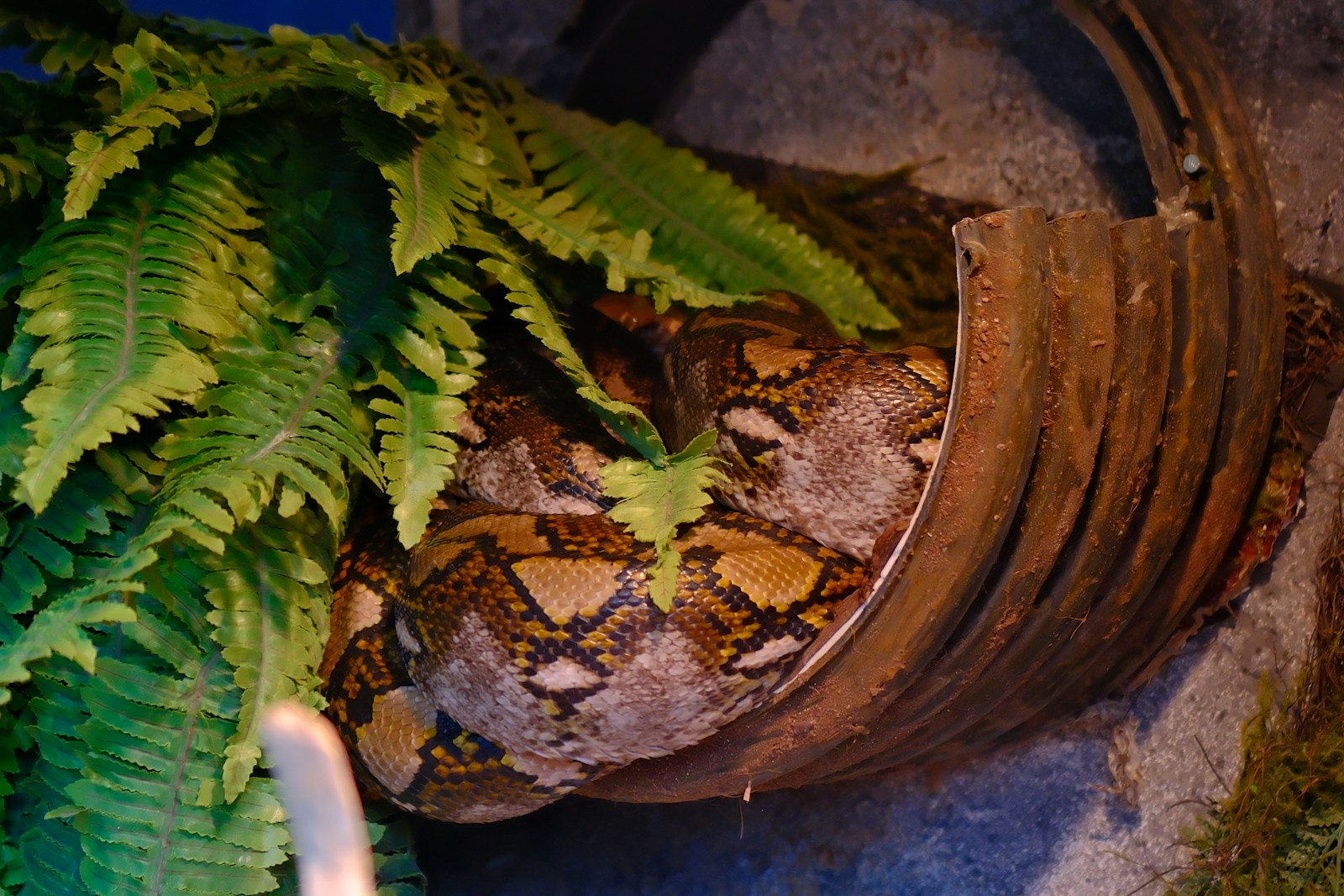
The conservation status of the Spider-tailed Horned Viper remains somewhat uncertain due to limited population studies. Currently, it is not listed on the IUCN Red List, primarily because of insufficient data rather than confirmed population stability. The snake faces several potential threats, including habitat degradation from mining and agricultural expansion in its limited range. Climate change poses a particular risk, as the specialized habitat requirements of this species may become increasingly scarce with shifting climate patterns. Additionally, its unique appearance has generated interest from exotic pet collectors, raising concerns about potential illegal collection. Conservation efforts are complicated by the limited international attention this species receives and the challenging political situation in parts of its range.
Cultural Significance
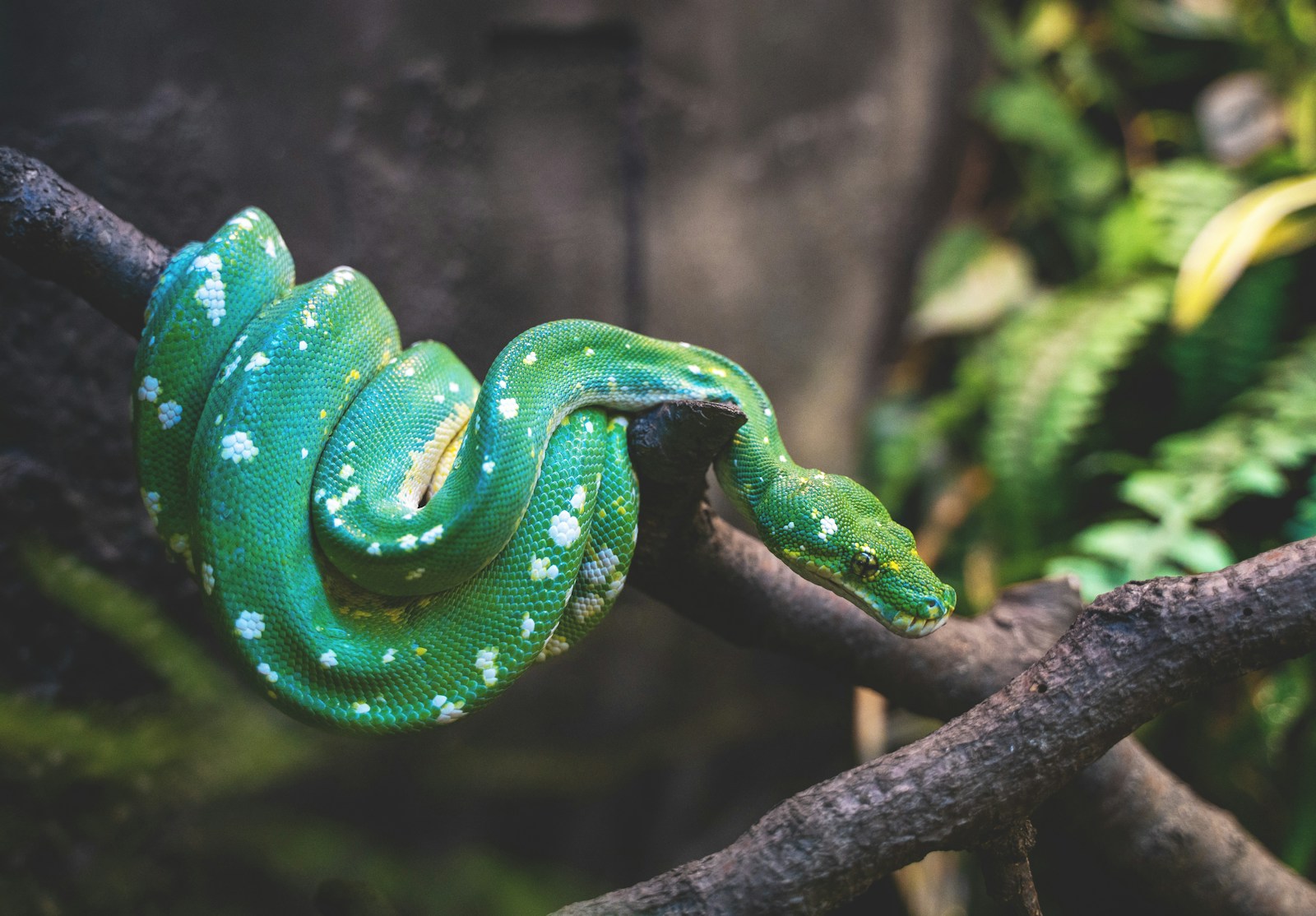
In the regions where the Spider-tailed Horned Viper naturally occurs, local cultures have long been aware of this unusual snake and its deceptive hunting tactics. Traditional ecological knowledge in western Iran includes references to a “spider snake” or “two-headed snake” that features in various folk tales and cautionary stories. In some local traditions, the snake is viewed as a symbol of deception and cunning, while in others, it represents the balance of nature and the complexity of survival strategies. Since its scientific description, the viper has attained a new cultural significance as a source of national pride in Iran, highlighted as an example of the country’s unique and understudied biodiversity. The snake has been featured on educational materials and conservation campaigns aimed at promoting awareness of Iran’s natural heritage.
Scientific Research Challenges
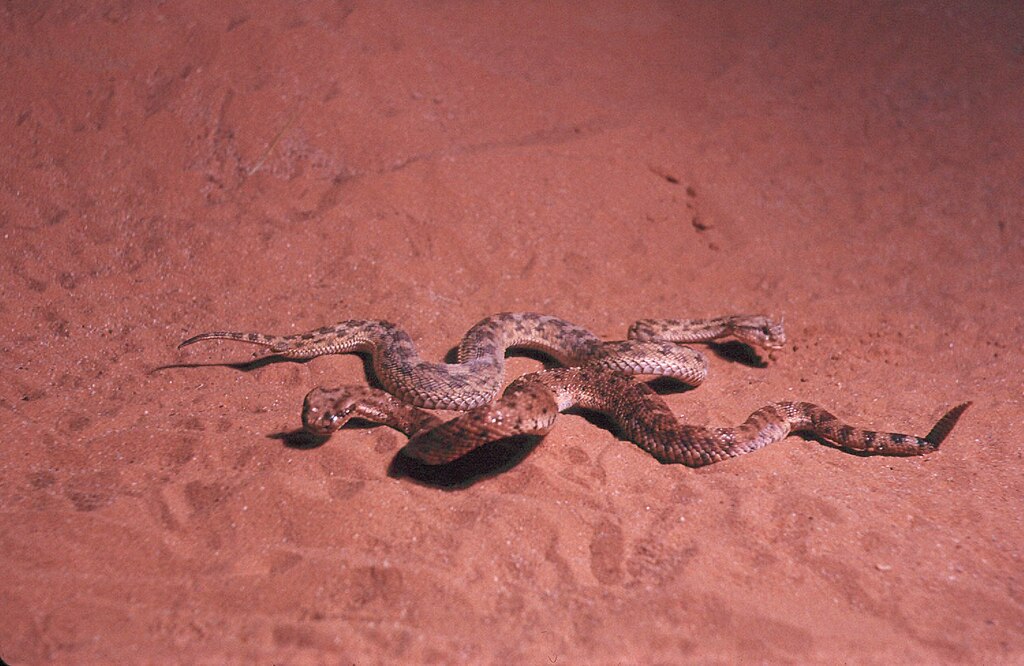
Studying the Spider-tailed Horned Viper presents numerous challenges that have limited scientific understanding of this remarkable species. The remote, mountainous habitat makes field studies logistically difficult, while the political situation in the region has complicated international research collaborations. The snake’s cryptic nature and excellent camouflage make it extremely difficult to locate in the wild, even for experienced herpetologists. Captive breeding programs have had limited success, further restricting research opportunities. Video documentation of natural hunting behavior represents one of the greatest challenges, requiring patience and specialized equipment to capture these rare events without disturbing the snake. Despite these obstacles, recent years have seen increasing research interest, with several international teams working with Iranian scientists to better understand the ecology, behavior, and evolutionary history of this unique reptile.
Similar Evolutionary Adaptations

The remarkable tail mimicry of the Spider-tailed Horned Viper exemplifies convergent evolution—where similar traits evolve independently in different lineages. This phenomenon can be seen in other examples throughout the animal kingdom, though few are as elaborate as this viper’s adaptation. The Alligator Snapping Turtle uses a worm-like tongue lure to attract fish, while certain deep-sea anglerfish employ bioluminescent lures resembling small prey items. Among arthropods, Assassin Bugs that mimic termites and certain mantis species that resemble flowers demonstrate similar principles of evolutionary deception. What makes the viper’s adaptation particularly noteworthy is the complexity of both the anatomical structure and the behavioral component required to create a convincing illusion. This example demonstrates how strong selective pressure can drive the evolution of remarkably specific and complex adaptations when they provide a significant survival advantage.
In conclusion, the Spider-tailed Horned Viper represents one of nature’s most remarkable examples of evolutionary specialization and predatory adaptation. This snake, with its extraordinary ability to mimic not just the appearance but the movement patterns of scorpions and spiders, demonstrates the incredible potential of natural selection to produce highly specialized hunting strategies. As scientists continue to study this remarkable species, it serves as a powerful reminder that even in our age of extensive biological knowledge, nature still holds astonishing surprises. The viper’s unique adaptation challenges our understanding of mimicry, predator-prey relationships, and the evolutionary processes that shape such specialized traits. In the forbidding deserts of the Middle East, this master of deception continues its ancient hunting strategy, a living testament to the endless creativity of evolutionary processes.

